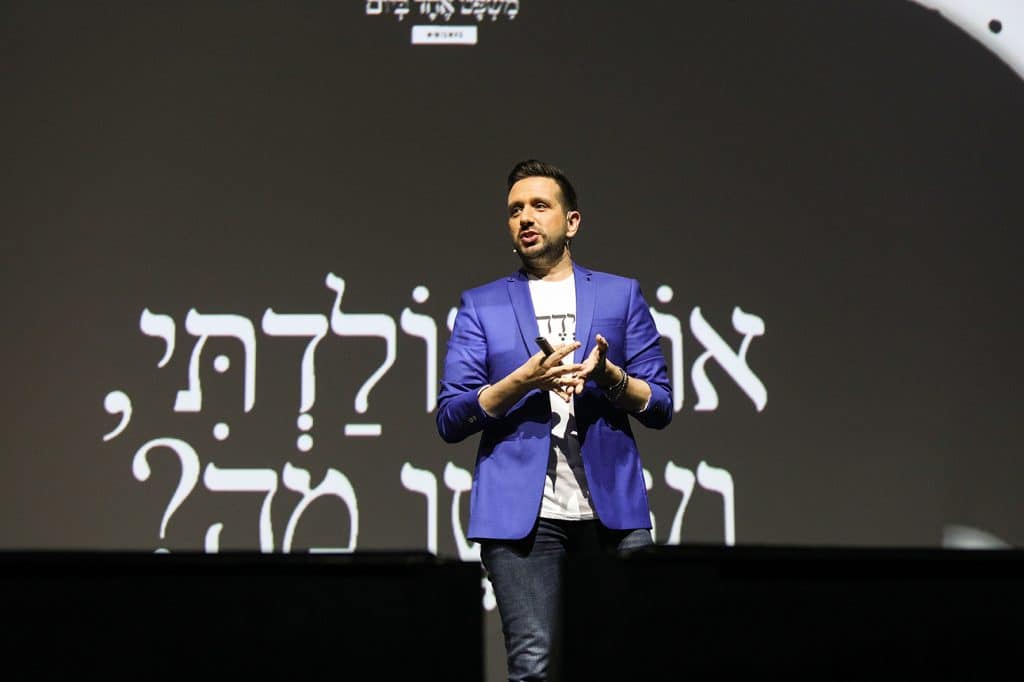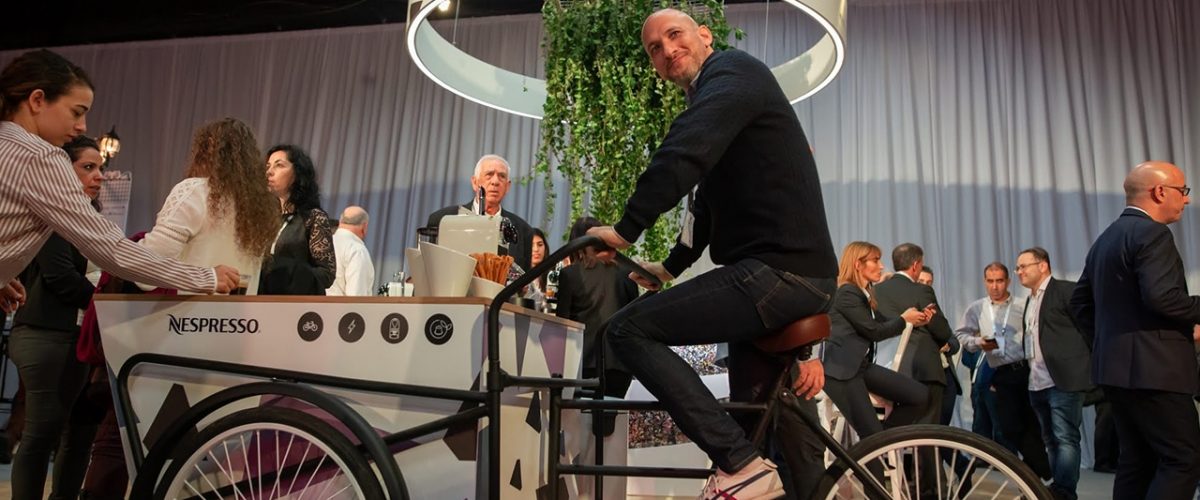Around 2008, when I started working in the field of exhibitions, design, and event production, I didn’t understand that I was actually doing experiential marketing (sometimes called “brand experience” or “engagement marketing” in English). Experiential marketing is a marketing strategy based on the fundamental assumption that consumers choose a product or service based on the experience before, during, and after the actual purchase and consumption. Culture and design are wonderful means for creating such a connection. Unlike traditional marketing that relies on quality, price, and advantages, experiential marketing focuses on user experiences as they form during brand familiarization, consumption, and purchase. The main goal in experiential marketing is to evoke and create an emotional connection between the consumer and the brand, a connection that is vital to differentiate the brand from competitors. In 2019, the American business sector invested about $62.3 billion in this connection, which is 21% of the total marketing budgets of those brands. The trends show constant growth compared to the ongoing decline in investment in direct marketing channels.

Let’s go back for a moment to the jolly 80s
Experiential marketing was born in the 1980s with the understanding that emotional needs have tremendous power in consumer choices. Its relevance grew even more after the exhaustion of traditional marketing tools, which failed to address these emotional needs as they focus on more rational needs, such as functionality or attractive pricing. With the development of digital technology and internet use, a deep technological connection between brands, consumers, and customers became possible. This connection only tightened thanks to social media and various communication channels like WhatsApp, Telegram, chats, and different bots that allow easier and more immediate communication. In recent years, resources have been directed to collecting and analyzing the information produced from it. Brands today have much more access to data, algorithms, statistics, and many mathematical models that allow for precise interactions in terms of segments with a high level of effectiveness (performance).
Another aspect of the digital revolution is the ongoing dialogue between brands and consumers, which gives brands real-time feedback, a huge advantage when wanting to innovate, learn, and develop. Experiential marketing is also based on dialogue and interpersonal involvement that creates emotions and memories. The approach is not content with using statistical and/or analytical tools, but encourages the use of interdisciplinary tools that are the key to innovation and constitute added value and the socio-cultural context of consumption.
Let’s Play
Just before 2021, brands have already internalized that sharing a cultural, emotional, and social world is an integral part of marketing and content strategy. In experiential marketing initiatives and connection to design, different levels of involvement and participation are made possible and they are measured according to 4 quality principles:
Human interaction: Brands aim to create personal connections and sometimes choose to do this through personalization processes, so that the approach to the consumer allows for choice from many alternatives or analysis of preferences or personality traits to offer a specific service or product. This category includes all activities that create a human, personal, and authentic connection, whether live, digital, or offline. For example:
Project: Playland, Discoveryland, Dreamland by Pinterest, October 2019
Credits: Creative agency: Anyways, Design and production studio: One Rise East in collaboration with artist: Yinka Ilori
What’s the deal: Pinterest space at the Cannes Lions Festival. An experiential space, an installation divided into three different areas where the audience wandered to get inspiration, explore, get to know, and discover. The product is the result of color research of photos that interface users collected on the platform. The research was translated into a stunning set design according to different areas and levels of human interactions at different levels of participation. An inspiring space that allows room for everyone, the bold, the shy, the observers, and the mixers. The design is noticeably inclusive, accessible, energetic, and research-based. It’s a quality product of successful collaboration with top-tier designers. Bottom line, it creates a connection between experiential marketing and design in a homogeneous and accessible way.
Highlight: The collaboration with food design studio The Robin Collective, who created a self-service sensorial bar where you can smell, taste, and hear different scents, noises, and flavors and receive a personalized drink. An excellent example of promoting inspiration values through fun-based interactions, play in a non-sales environment. A very viral project made with a very high level of aesthetics that corresponds with the colorful world of Pinterest’s inspiration boards.
Tags: #fooddesign #designthinking #eventplanning #creativeconcept #design
Emotional impact is the experiential principle that deals with creating long-term relationships through an emotional connection of entertainment, uniqueness, and fun.
Total sensory involvement: Initiatives involving as many senses as possible through which we can create powerful associations and emotions that will leave a long-lasting impression and create interesting connections in customers’ consciousness. Sight and hearing are indeed the most basic and common, but recently there’s a variety of activities that also involve the senses of touch, smell, and taste. Combining several senses in one activity is possible thanks to cross-disciplinary design processes and innovative design tools, for example, food design. An example of this is the Nespresso Atelier project (full disclosure – my agency produced it about a year and a half ago).
Project: Nespresso Atelier Israel. Nespresso Israel, December 2018
Credits: Onyx Productions Design: Amit Farber
What’s the deal: Every year, Nespresso launches limited edition capsules with unique coffee blend flavors. The Taste of Paris edition offered coffee blend flavors inspired by Parisian desserts at the end of 2018 and led the company to create an event in atelier format with artisan workshops for customers in a series of inspiring events. The event was built around content units that dealt with Parisian culture from different aspects. Pastry chef Tal Spiegel created 3 dessert recipes inspired by the coffee blends and gave a workshop on making pralines, David Kashka lectured on Parisian café culture, and Illy Schwartzman conducted a workshop on coffee pairing with desserts in collaboration with Dalloyau patisserie. During the event, the company’s customer audience underwent a sensory experience of flavors and aromas, mainly in a designed environment simulating a French patisserie.
Highlight: The calories, the smell of baking combined with a carefully curated playlist that made us dive into the history, stories, and flavors of Paris in the middle of Jaffa.
Tags: #coffeelovers #nespresso #atelier #fooddesign #foodstyling #tasteofparis #patisserie #cake #dessert

Emotional Impact is the experiential principle that focuses on creating long-term relationships through the emotional connection of entertainment, uniqueness, and fun. This is where to examine who the ambassadors, influencers, and presenters the brand chooses for its campaigns are, and to assess their value alignment with the brand’s character and conduct.
Project: Renault Clio campaign in collaboration with the Instagram account @mismas “One Sentence a Day,” March 2020
Credits: Ido Greenberg, mismas, Dana Kehlon Communications and Public Relations, Sarit Radin, Vice President of Renault Clio Israel
What’s the Story: To mark the launch of the new Renault Clio in Israel, the car company partnered with the creative and digital figure Ido Greenberg, who is behind the brand @mismas “One Sentence a Day.” Clio and mismas created a project under the title “Changing the Language on the Road” with the aim of raising awareness of different discourse on Israel’s roads. The campaign is unique and precise due to its value alignment with a highly relevant cultural phenomenon and shared agenda. The campaign used Ido’s sentences in the design of cars that drove on the country’s roads, creating a ‘guerrilla’ effect, using public space in a surprising way, with a direct emotional connection to the issue the campaign addresses: changing the culture of discourse on Israel’s roads.
Highlight: An unconventional choice of Ido, an influencer from the LGBTQ+ community, who leads a brilliant content brand and has a compelling and emotionally engaging personal story that accurately aligns with the brand’s messages.
Tags: #clio #guerrillamarketing #cars #mismas #driving #streetmarketing #communication #OneSentenceADay

Interaction: There are hardly any barriers between brands and consumers. Interactions are very open and authentic in the digital age, making brands vulnerable and exposed as a result. This is the time to focus on awareness rather than urgent sales. Consumers face a very wide range of alternatives, and the question of “what’s in it for me” cannot be satisfied with the product alone but must extend to additional experiential, design, aesthetic, and emotional realms. The following example touches on how a brand creates an escapism experience through design, expressing our deepest desires. And in our next example, how could it not be about ice cream and shoes!
Project: Chunky Dunky, a collaboration between Nike and Ben & Jerry’s through selected skate shops, May 2020.
Credits: Nike, Steve Pelletier, Senior Product Line Manager, himself an art department graduate, and his friend Jay Curley, Global Marketing Director of Ben & Jerry’s.
Summary: Every year, Nike launches limited edition Nike Skateboarding shoe series, and this time in a particularly fun collaboration with the ice cream company Ben & Jerry’s, offering an amazing interpretation of the popular Chunky Monkey ice cream flavor, translating edible tastes and textures into sneaker design for fans, skaters, and collectors. The shoe design takes the familiar flavor to very interesting and fun sensory realms, from the dripping yellow Nike logo simulating ice cream, to cow-patterned fur textile sections on the heel, tongue, and front bridge, which resonate with the brand, light blue clouds, and many other particularly rich visual and textile details. The surprising connection delves into impressive details, including a crazily colorful tie-dye insole taken straight from the ice cream company’s merchandising language. This is an iconic item that connects the different target audiences of the brands to each other and creates a global escapist collectible experience alongside an emotional connection of fun with skater culture.
Highlight: There aren’t many examples of collaborations so balanced down to the smallest detail like the label sewn on the back of the tongue with the motto “If it’s Not Fun….Why Do It?” because what are we if not the fun we’ve made. Or in this case, the fun we get out of it. Perfection.
Tags: #fashion #beauty #retail #sports #creativeconcept #design #icecream #textile






